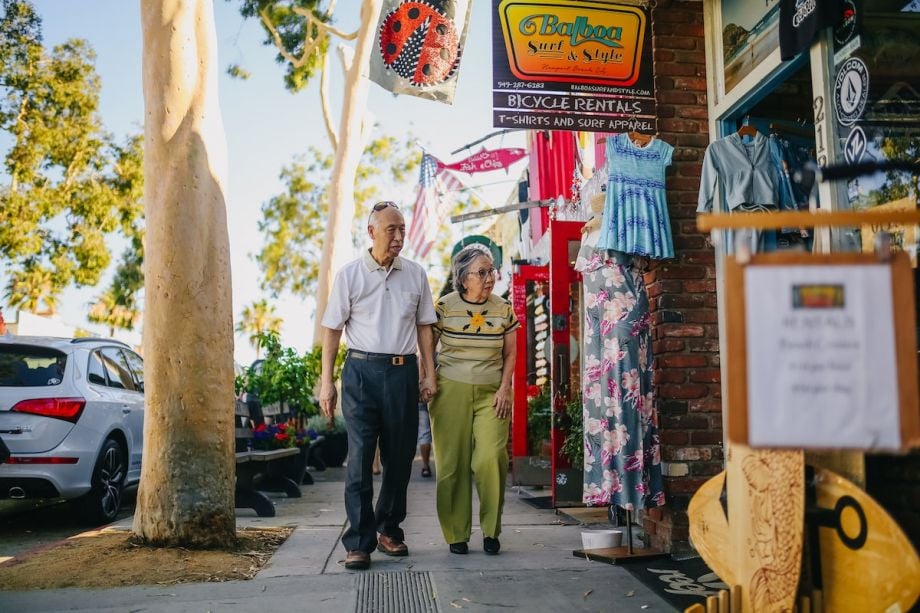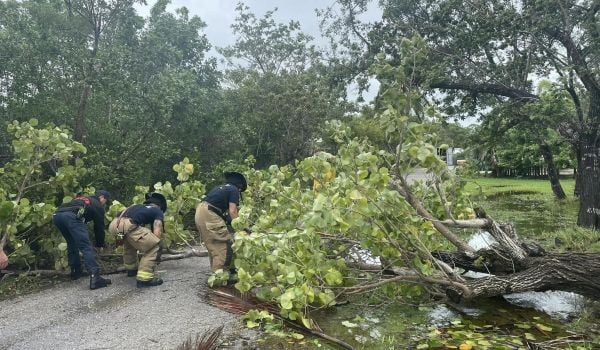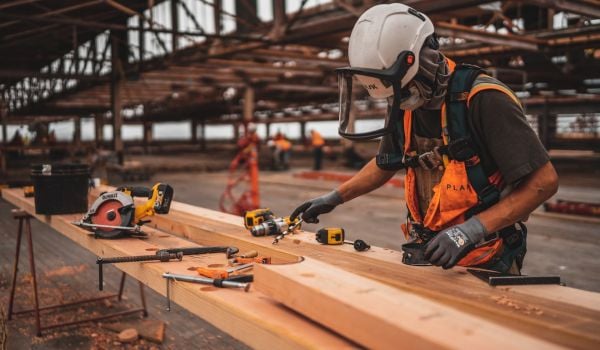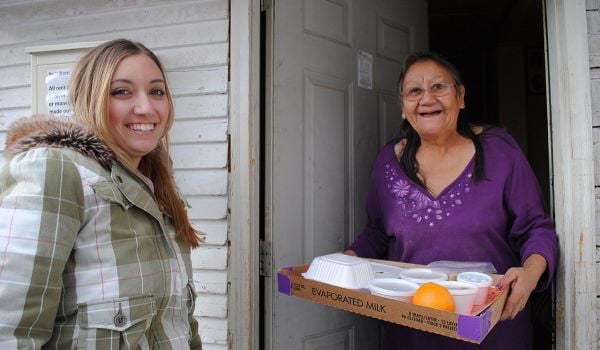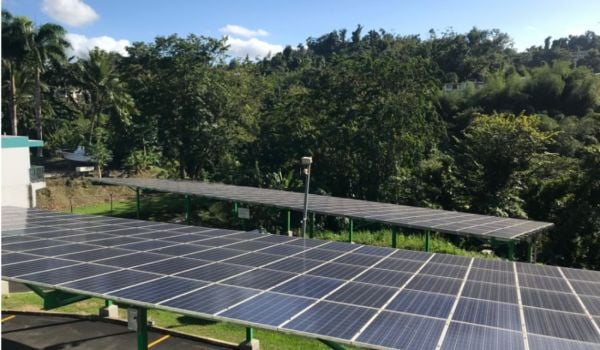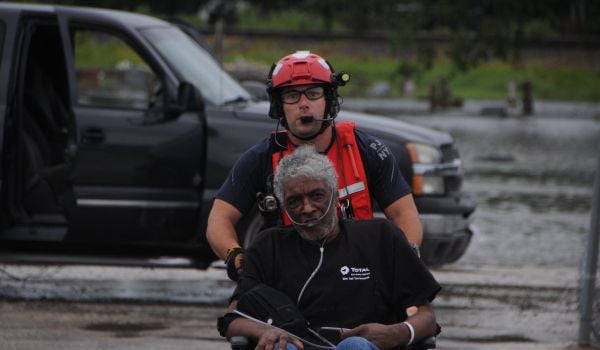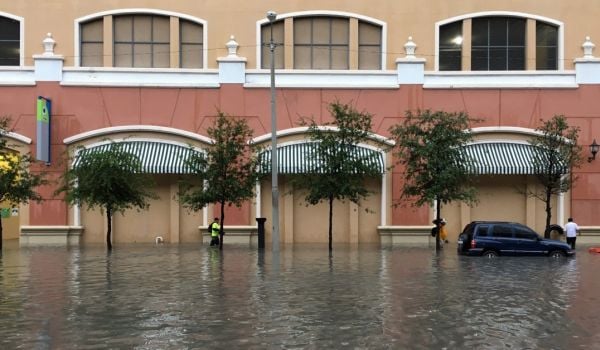As climate disasters and challenges multiply, what makes a community resilient? One answer might surprise you. Social connections – the myriad ties that link people and communities together — can speed recovery and even save lives in a crisis.
The good news is that we can build communities that actively nurture those connections, by creating social infrastructure: places for people to gather and interact.
The power of connection is well known. When a deadly heat wave hit Chicago in 1995, some of the city’s most disadvantaged neighborhoods had the lowest mortality rates – lower, even, than Chicago’s wealthiest enclaves. What those neighborhoods had in common were dense social networks – block groups, church clubs and neighbors who checked on the most vulnerable. A study in Boston last year similarly found residents who were more connected with their neighbors, religious communities and coworkers were also more likely to know about resources and services for extreme weather.
The built environment can encourage (or thwart) the formation of such networks. Connections flourish when people have places to interact and connect, including public parks, libraries, community gardens, or “third places” like coffee shops and hair salons.
Some developers have been building such social infrastructure for decades, from FDR’s Depression-era Greenbelt towns to the master-planned communities of the 1960s and the new urbanism that took root in the 1980s.
But the need for social infrastructure takes on new urgency in the era of climate change. And real estate developers have an opportunity – and a responsibility – to cultivate social connection in the places we build.
I lead sustainability strategies at Howard Hughes, a developer and owner of several master planned communities — including Downtown Columbia in Maryland, The Woodlands in Texas, and Summerlin in Nevada — that are market leaders in creating social infrastructure. In all Howard Hughes developments, residents have access to parks and green space within a quarter-mile of their homes. And residences are clustered around a village core that includes commercial space, schools, health care and entertainment venues. Moreover, those parks and other amenities are open to the broader community – extending the webs of social connection beyond the developments’ boundaries.
Earlier this year, I myself moved to The Woodlands from the East Coast. On my short nine-minute commute through tree-lined parkways and scenic views of lakes, I often think of the positive transition for me and my family to a community that celebrates sustainability, inclusivity and transparently invites everyone to participate. In just a few months, we have met our neighbors in the park in our neighborhood, celebrated the Indian holiday of Holi at the Hindu temple and enjoyed fine art in The Woodlands Waterway Arts festival.
For residents like myself, the benefits are clear: a vibrant community with ample opportunities to connect. But I know first-hand that there are benefits for the developer, as well. High-quality public realms and socially oriented spaces add value to neighborhoods, helping make these developments among the best-selling communities in the U.S.
The amenities that nurture social connections can do double duty during a crisis. Common areas with backup power can provide shelter and refuge during a storm. And green spaces — parks, plazas and courtyards — can lower the temperature and provide places to cool off on hot days. Waterfront parks with berms or levees can serve as walking or biking trails, while also providing protection from storms and flooding. These well-loved community assets provide co-benefits that pay dividends before, during and after a disaster.
Fundamentally, the success of a real estate development depends on the health of its wider community. This is especially true in the context of climate change: Even the most resilient building can’t create value if its surroundings lose vibrancy in the face of repeated climate impacts.
That means that developers, investors, managers and owners have a critical interest in mitigating climate hazards. We also have the tools to do so. Social infrastructure is a proven strategy to mitigate hazards and, in turn, protect the value of our portfolios.
Social infrastructure is important in market-rate developments like mine. It is even more important in historically underinvested communities. As the Urban Land Institute’s 2021 Environmental Justice and Real Estate report explains, low-income and Black, Indigenous and people of color (BIPOC) communities in the U.S. are the hardest hit by climate risks. They are disproportionately impacted by flooding and can be up to 20 degrees Fahrenheit hotter than wealthier neighborhoods, because of public disinvestment in green space and tree canopy.
These neighborhoods have the most to lose in a changing climate – and the most to gain from social infrastructure that protects residents in times of crisis.
Across the U.S., in underinvested neighborhoods and affluent planned communities, real estate developers have a critical role to play in building climate resilience. By cultivating social infrastructure, we can create vibrant, valuable neighborhoods that keep residents safe and connected in a hotter, more dangerous world.
Gautami Palanki is Senior Vice President, ESG Strategy at Howard Hughes, advancing the organization’s commitment to responsible development and operations and setting the strategy across the company’s national portfolio of large-scale master planned communities (MPCs) and mixed-use properties.
Gautami joined Howard Hughes in 2021, bringing over fifteen years of global experience at the intersection of real estate, sustainability, and technology, in both private and non-profit organizations. Gautami has delivered keynote talks and led workshops to audiences in more than 20 countries and volunteers as a subject matter expert with industry think tanks. A licensed architect and LEED Fellow, Gautami holds a B. Arch from Jawaharlal Nehru Technological University, India and M.S. in Sustainable Design from Carnegie Mellon University.

